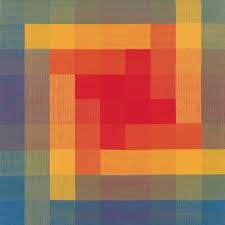 (1917–2018)
(1917–2018)
Artist and Master textile weaver
Ethel and her architect husband, Dick, lived across the street from us in Croton-on-Hudson, New York. We (my wife, Ellen and I) got there in 1980. Dick and Ethel had been in their house from the 1940s. Ellen, who had known Ethel for a few years before, became the fast friends that they were until Ethel’s death in 2018. Ethel was so much considered a part of our family that our two children, Allison and Tim, pronounced her to be their adopted grandmother.
Long before we got to Croton, Ethel had begun studying textile weaving methods. She devised a unique way to interact with a draw loom. The draw loom is/was a very large and complicated weaving machine that was developed in the late 1300s and required at least two people to operate. Ethel worked at its re-design and built one in her studio that could be operated single-handed. She created incredibly complex designs, producing art pieces that are amazingly beautiful and are collected by some of the most prestigious museums in the world.

In 2014, at the age of 96, Ethel’s work was presented in a life-retrospective exhibit at the Art Institute of Chicago. She and her relatives and friends attended the opening. Ethel, in what was always her demure manner, sat and enjoyed the honor of that moment which we were very pleased to have shared with her.
Her work has been shown at the Cooper Hewitt, the American Craft Museum, the Cleveland Museum of Art, The Met, MOMA, and the San Francisco Museum of Modern Art.
Much of her work has become a part of the permanent collection of the Art Institute of Chicago. Her now-famous draw loom has been moved to Chicago along with the complete contents of her studio where the museum plans to reconstruct an exact replica of her studio. The studio and the loom, including sketches of designs that were pinned to the walls, is to stand as a permanent exhibit in the museum.
Otto Barz, August, 2020